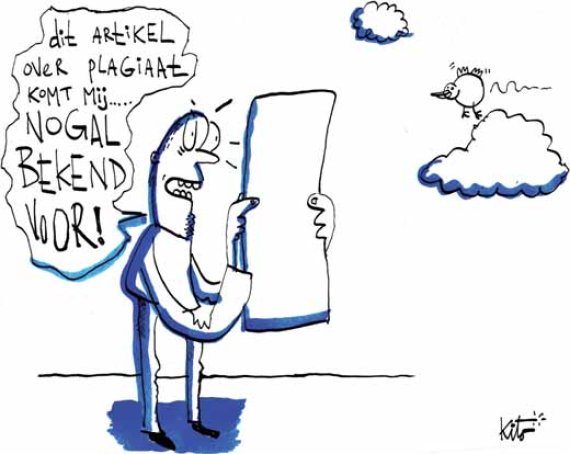The deadline for your report is looming: just an hour or two to go. Needless to say, you have left everything till the last minute again. And how you have got to finish it, otherwise you won’t get your credits and you’ll have to take the course again next year. With the clock ticking mercilessly, you start to realize it is far more work than you thought. You scroll enviously through that article online that explains it all so clearly: you couldn’t have put it better yourself. What could be the harm in copy-pasting a couple of paragraphs? Next time you will definitely get your act together: keep up with your notes, start in time and aim for an 8. Uneasily, you press Ctrl-C and then Ctrl-V.
Hopefully this example does not sound too familiar because plagiarism, citing material without acknowledging the source, is one of academia’s deadly sins. What is more, the chances of being caught are considerable these days. All students’ writing is routinely scanned with the anti-plagiarism tool TurnItIn, which indicates what percentage of the work is original and even where ‘borrowed’ sentences come from. Teachers have their own plagiarism detectors too: alarm bells ring when they notice changes in the standard or style of the English.
Offences
In spite of all this, serious plagiarism cases do still crop up. In the academic year 2011-2012 the examining boards received 14 complaints about misconduct, most of them cases of plagiarism. Anonymous case descriptions in the examining boards’ report illustrate where students sometimes go wrong. One group of three students, for example, copied part of each other’s individual assignments. Another student included extensive quotations in an essay without referencing the source properly. To add insult to injury, this was on a course that paid great attention to plagiarism and how to avoid it. The occasional individual, the report reveals, thought they could get away with simply copy-pasting texts from the internet.
Theme
Students plagiarize for a variety of reasons, says Dick van der Hoeck, who is on the Environment and Landscape examining board. ‘It can be a matter of time pressure, naivety or just plain sloppiness.’ Most students realize you are not allowed to simply lift material wholesale. Students learn by trial and error how to cite and reference, and to structure their writing. Sometimes they unintentionally stray into a grey area. They may, for example, have referenced their source in some way but have used too big a chunk of text to count it as a quotation. As for foreign students, they are a case apart. They may have been taught other rules about correct referencing, or their university may not have paid much attention to the issue.
Punishment
In minor cases or in a first draft, teachers prefer to stick to a verbal rap over the knuckles. It is hard to know how often that happens. ‘But judging by my colleagues’ anecdotes,’ says study advisor Alet Leemans, ‘it happens pretty regularly.’ Students who commit serious or repeated plagiarism come before an examining board. They get the chance to defend themselves in writing, and a discussion follows. ‘We take plagiarism seriously and go about it very formally,’ says Van der Hoeck. ‘So those sessions are no fun. Students usually own up straightaway. They often acted on impulse and they are always truly sorry.’ The examining board then imposes a punishment, varying from resubmitting the assignment to being excluded from a course for a year, or even being suspended – although this punishment has never yet been meted out.
Students usually own up straightaway. They often acted on impulse and they are always truly sorry
In practice, the procedure is quite a punishment in itself. ‘Plagiarism cases are painful, very painful,’ says Van der Hoeck. ‘Not least for the teacher, who explained the rules of citation, told the students about the plagiarism scanner and is still faced with plagiarism.’ Fortunately the plagiarizers do learn their lesson. ‘We come down hard on it,’ says Van der Hoeck. ‘And we have never had a repeat offender.’
Illustration:Kito

